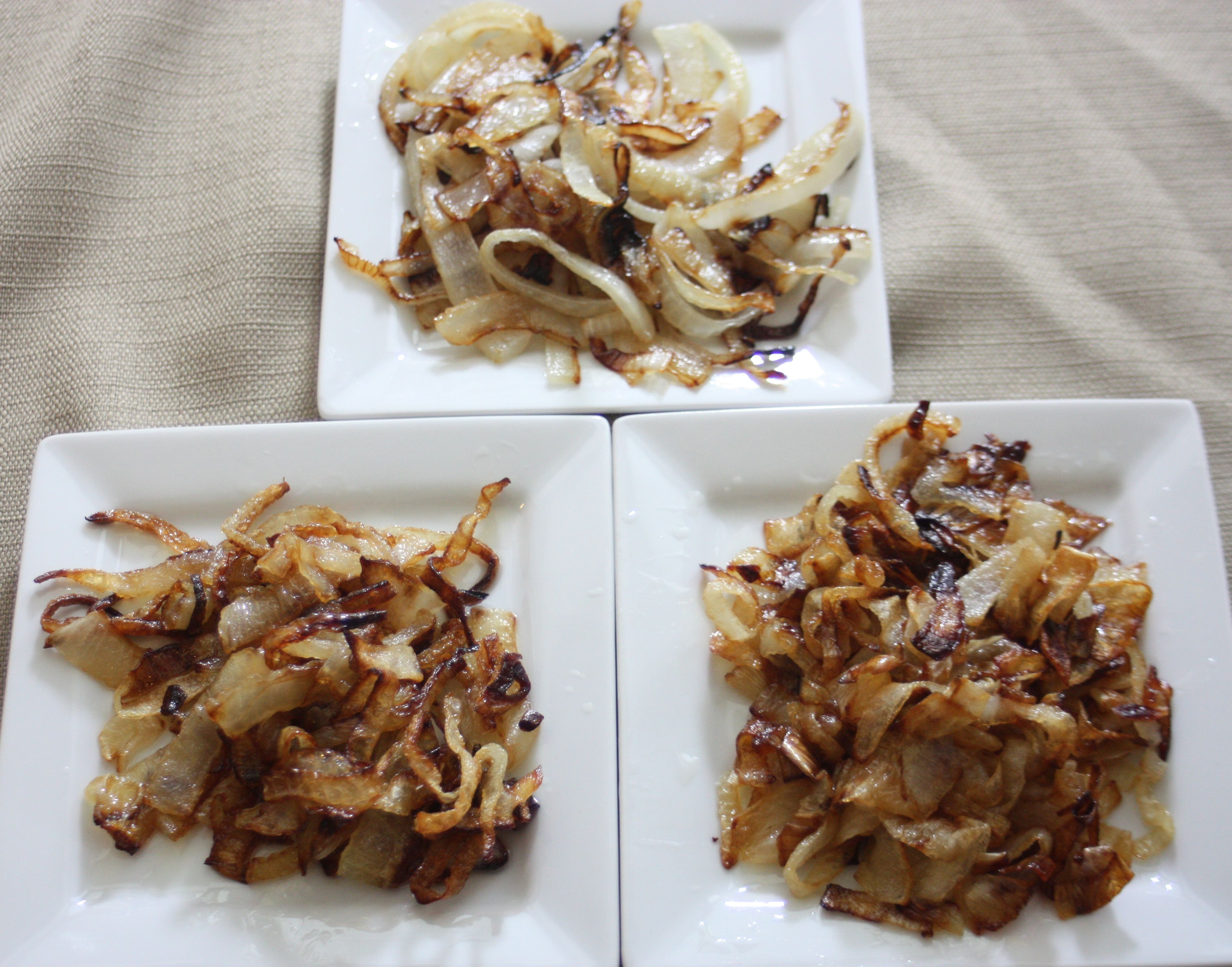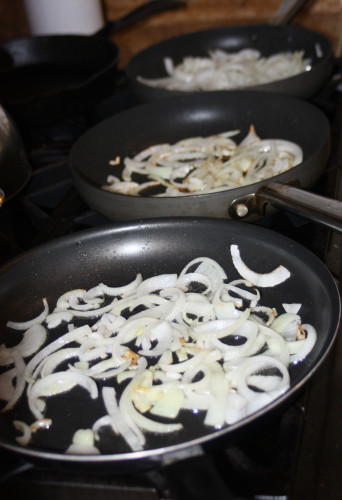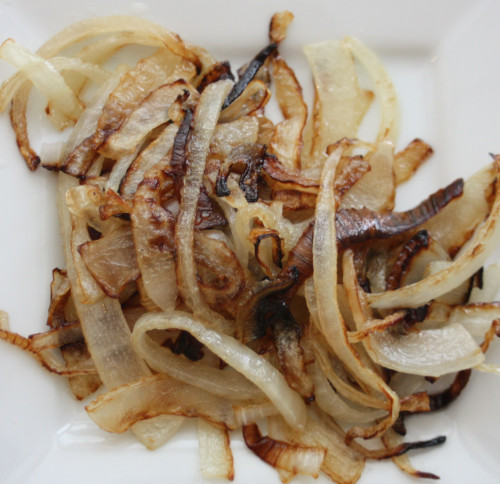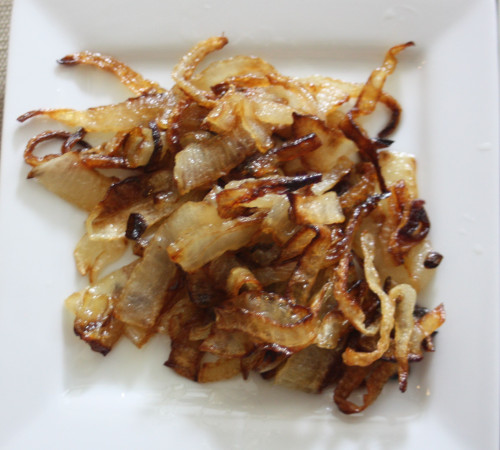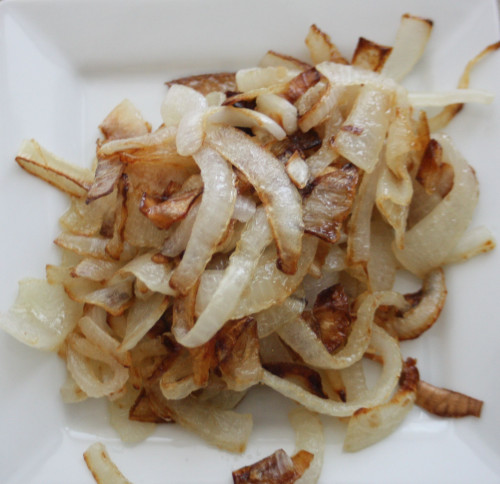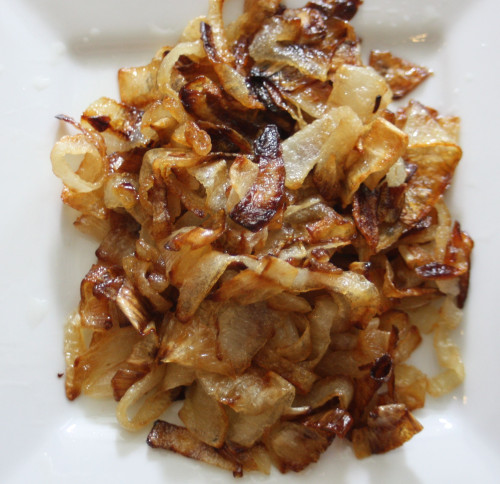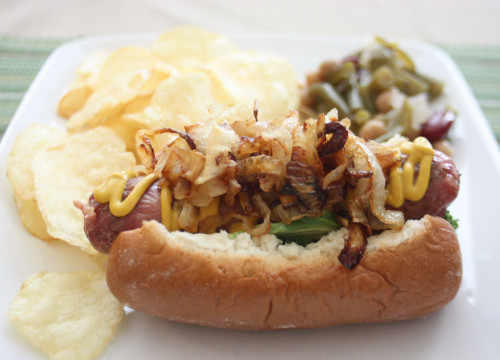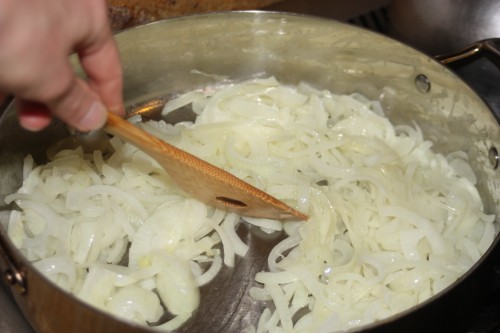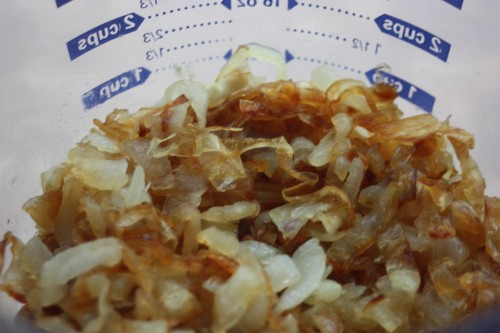Caramelized onions are a food item that can make nearly any dish better. I love to stir them into eggs and dips, or add then as a topping to steak, burgers, or pizza, just to name a few uses.
The key to perfectly caramelized onions is the old mantra – Low & Slow – which means cooking the onions over low heat, and stirring them often for approximately 30-40 minutes. This allows some of the water to escape from the onions first, softening them, and then lets the sugars in the onions reach the correct temperature for the Maillard reaction to take place, browning the onions and adding complex flavors.
Cooking the onions over too high of heat results in uneven cooking, but what are some other mistakes? Can a pan be overcrowd, resulting in over-steaming and not enough caramelization? Experiment time!
Experiment Objective
Determine how heat level and pan crowding affects onion caramelization.
Method
Step 1. Yellow onions were sliced into strips, and placed into a 10 inch or 12 inch saute pan (each with 2 tablespoons of oil), with the quantity per pan as noted in Table 1. I chose yellow onions since I think they caramelize the best, which was the same conclusion made by J. Kenzi from Serious Eats in his onion experiments.
Step 2. Pans were placed on a gas stovetop and cooked at the heat level noted in Table 1.
Step 3. Pans were removed from the stove when the onions were either on the verge of burning or had caramelized.
Table 1. Summary of Onion Caramelization Experiment.
As expected, the onions cooked under high heat (Case 2) were finished the fastest in only 8 minutes. However, the cooking is uneven with parts browned and almost burnt, and other parts just translucent. The result is a barely there caramelized taste.
Case 1, with just a little bit of onions for the pan was done in 25 minutes. The result was caramelized onions, bordering on over cooked. If I hadn’t been watching the pan carefully, I’m sure some of the pieces would have burnt due to hot spots.
Case 3 was first removed from the stove at the same time as Case 1 for comparison purposes. You can see that the onions have started to caramelize, but there are plenty of pieces that haven’t had time to brown. The onions went back to the stove (still over low heat) and fifteen minutes later they were perfect.
Hopefully the pictures convince you why “low and slow” is the best. For a 10 inch saute pan, up to 2 ½ cups can be caramelized successfully, though it will take you nearly 40 minutes to achieve the satisfyingly sweet goodness. My guess is that much beyond 2 ½ cups in a 10 inch pan would run the risk of unevenly browned onions or over steaming, though I didn’t get to that point in my experiment. Hunger won out over my curiosity this time. What surprised me the most was that the under-filled pan could be almost as detrimental as high heat to your caramelization efforts.
The best part of the experiment was getting to consume the results. I managed to restrain myself from eating them right out of the pan and instead devoured the onions served over my favorite sausage. Edible experimentation at its finest!
UPDATE:
I had a chance to add to my experiment, and this time I used my tri-ply clad stainless steel pan, which can hold a larger amount of onions since it is 12 inches in diameter and holds 5 quarts. I melted four tablespoons of butter in the pan and then added 8 cups of chopped, yellow onions. I was able to evenly brown the onions with a lot of babysitting and it only took a mere 1 1/2 hours. By combining this with the results from before, I actually get a linear relationship between quantity of onions to caramelize and the time it takes (sorry, not enough data for error bars). I also prefer my tri-ply pan for caramelizing onions, since it provides extremely even temperature distribution – the last photo shows how evenly golden the onions were, even with such a large quantity.
Another good tidbit: 8 cups of raw onions reduces to 1 cup of caramelized onions!
(3163)
